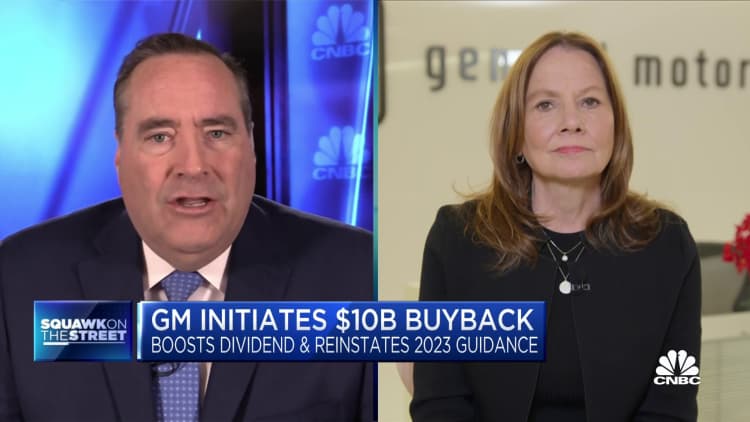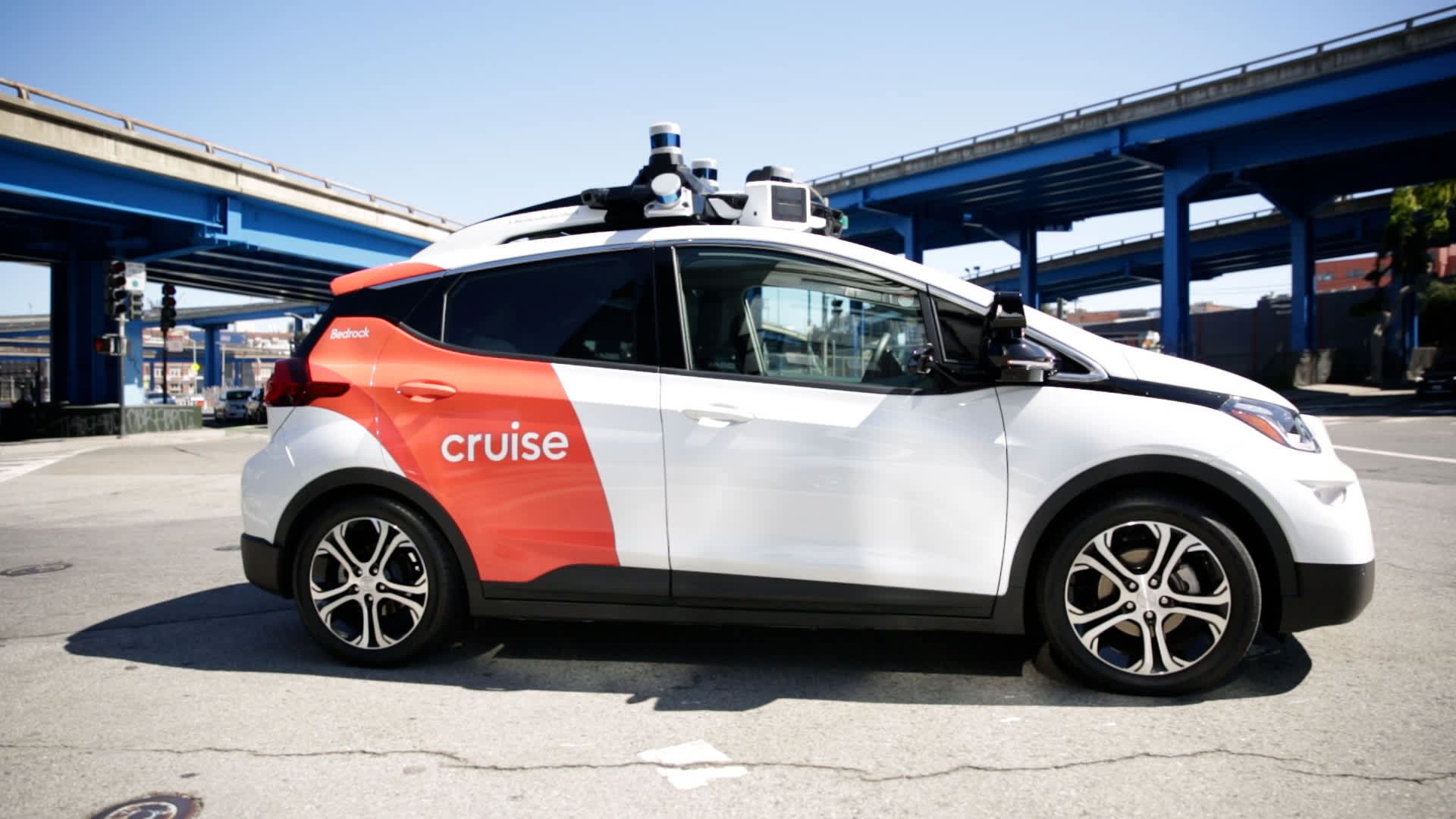DETROIT — General Motors' plans to diversify its business through trendy industries such as ridesharing and other "mobility" ventures or startups have
DETROIT — General Motors‘ plans to diversify its business through trendy industries such as ridesharing and other “mobility” ventures or startups have largely fallen flat since the automaker started investing in such growth areas in 2016.
Cruise, its majority-owned autonomous vehicle subsidiary, is increasingly looking like it might be next.
The unit has quickly gone from one of GM’s greatest business opportunities to a growing liability. Cruise, of which GM owns more than 80%, has confronted a wave of problems and investigations sparked by an Oct. 2 accident in which a pedestrian in San Francisco was dragged 20 feet by a Cruise self-driving vehicle after the person was struck by another vehicle.
Since the incident, Cruise’s robotaxi fleet has been grounded, pending the results of independent safety probes. Its leadership has been gutted, including its cofounders resigning and nine other leaders being ousted. GM is massively cutting spending and growth plans for the business, including pausing production of a new robotaxi. Local and federal governments have launched their own investigations. And the venture is laying off 24% of its workforce.

GM, like other companies, has quickly shifted from attempting to impress Wall Street with growth initiatives, including generating $80 billion in new businesses by 2030, to refocusing efforts on core business to generate profits amid economic and recessionary concerns.
Despite all that, GM appears to believe it can eventually move forward with Cruise. GM CEO Mary Barra said Dec. 4 during an Automotive Press Association meeting in Detroit that the automaker is “very focused on righting the ship” at Cruise.
“We are confident in the team and committed to supporting Cruise as they set the company up for long-term success with a focus on trust, accountability and transparency,” GM said Thursday in a statement related to announced layoffs at Cruise.
Past projects
But there’s growing concern across the industry, not just with GM and Cruise, about the viability of autonomous vehicles, or AVs, as a business instead of as a niche science project.
“AV technology, while they’ve made a lot of progress with it, is unlikely to be profitable anytime in the foreseeable future, certainly not this decade,” said Sam Abuelsamid, principal research analyst at Guidehouse Insights. “If they need to make cuts, robotaxis seem like the obvious place to do that.”
Some Wall Street analysts are holding out hope that GM and Barra can turn Cruise around and eventually refocus on growing the business, as the Detroit automaker takes a more hands-on approach with the company. Several are expecting updates at an investor event in March.
“The plan to pause Cruise operations and reduce spending on Cruise in 2024 are only first steps. Once again, we expect these concerns to be addressed and cured at the capital markets day in early 2024 but expect skepticism to remain in the interim,” Morgan Stanley analyst John Murphy said in a Nov. 29 investor note.
If GM can’t turn the operations around, Cruise would join a list of its past defunct growth businesses, partnerships and investments since 2016. They include:
- 2016-20: A “Maven” mobility brand that offered carsharing from the company as well as peer-to-peer
- Starting 2016: Partnerships with Uber and Lyft, including a $500 million investment stake in the latter. (GM made $78 million off its Lyft investment.)
- 2017-22: In-vehicle Marketplace app
- 2017-18: Book by Cadillac, a vehicle subscription service
- 2018-20: E-bikes
- 2019-21: Tie-ups with EV startups Nikola and Lordstown Motors, in which it had an equity stake as part of a deal to sell an Ohio plant, as well as a reported investment in Rivian that ended up not happening
The automaker also has discussed personal autonomous vehicles as early as mid-decade and evaluating “flying cars” for the mid-2030s, among other things that have been de-emphasized more recently. In 2021, the company said it had about 20 initiatives in its pipeline that targeted $1.3 trillion in new total addressable markets.
“Cruise has been both vastly more ambitious and vastly more costly than any of those other programs,” Abuelsamid said. “It certainly could end up on the trash heap. … They’ve got to take a long hard look at what they want to prioritize.”
Not all of GM’s noncore businesses that were launched in recent years have failed. GM Energy and the BrightDrop commercial EV unit continue to operate; however, GM recently brought BrightDrop in-house from being a wholly owned subsidiary.
GM’s financial arm continues to operate an insurance business that was launched in late 2020 as part of its growth initiatives.
“It’s about reprioritizing … and making sure that you’re reducing what you don’t need to do anymore,” GM CFO Paul Jacobson told media Nov. 30 about the company’s overall cost-cutting measures, including “considerably” scaling back its energy and BrightDrop units.
Brightdrop EV600 van
Source: Brightdrop
Jacobson said the change in Brightdrop was to reduce redundancies and cut costs, as business cases have changed. BrightDrop was expected to generate $1 billion in revenue this year; it’s unclear where that stands.
Jacobson declined to disclose whether GM could bring Cruise into the automaker, which has its own autonomous vehicle unit and recently appointed Anantha Kancherla from Meta Platforms to the newly created position of vice president of advanced driver-assistance systems.
GM continues to operate a military defense unit and fuel cell business that have both recently announced new contracts or partnerships. The company does not report revenue or earnings for these units.
GM says it remains bullish on its software initiatives and investments in joint ventures for EVs — for example, an investment projected to exceed $1 billion with POSCO Future M to increase production capacity of key battery elements in North America.
Are autonomous vehicles viable?
GM acquired Cruise in 2016. At the time, the company was trying to quell Wall Street concerns that traditional automakers wouldn’t be able to compete against emerging competition from Apple and Google, as well as emerging “mobility” companies such as Lyft, Uber and a litany of other startups that were expected to disrupt traditional car ownership.
But commercializing autonomous vehicles didn’t pan out for most, and it’s been far more challenging than many predicted even a few years ago. The challenges have led to a consolidation in the sector after years of enthusiasm touting the technology as the next multitrillion-dollar market for transportation companies.
Cruise was considered one of two front-runners left when it comes to robotaxis in the U.S., along with Alphabet-backed Waymo, which is also operating limited self-driving fleets for consumers. Amazon-backed Zoox also continues to test autonomous vehicles in several states.
Renderings from GM of the “Cadillac halo portfolio” that includes concepts of an autonomous shuttle (right) and an electric vertical take-off and landing (eVTOL) aircraft, also known as a flying vehicle.
Screenshot via GM
Others competitors such as Lyft, Uber and Ford Motor/Volkswagen-backed Argo AI have ended their autonomous vehicle programs, citing the massive investments needed for an unprofitable and untested industry. Stellantis has announced partnerships with BMW and Waymo, but nothing along the lines of Cruise and Argo.
“I want to know what needs to be done to get Cruise back running commercial services for consumers in a safe manner,” said Morningstar analyst David Whiston. “And then by not operating the consumer operations and, perhaps, not growing in other cities for the time being, how much costs can you save? Because the losses have gotten pretty big.”
GM’s investment in Cruise and its share of the company’s losses have cost the automaker more than $8 billion since 2016, according to annual public filings. The losses have been increasing, including $1.9 billion through the third quarter of this year.
After purchasing Cruise, GM brought on investors such as Honda Motor, SoftBank Vision Fund and, more recently, Walmart and Microsoft. However, last year, GM acquired SoftBank’s equity ownership stake for $2.1 billion.
GM has said it will significantly cut spending on Cruise. Barra, who leads Cruise’s board of directors, declined to say at the Dec. 4 press association meeting how much money the automaker is willing to spend on Cruise going forward until it completes its assessments and has a plan to move ahead.
Cruise had $1.7 billion in cash to end the third quarter, enough to last through a majority of next year at the current cash burn rate.
Barra and other proponents of autonomous vehicles have consistently touted that self-driving cars have the ability to significantly reduce crashes and roadway fatalities, while also providing transportation for those who may not be able to drive themselves.
“We’ll work through the challenges we have right now at Cruise,” Barra said Dec. 4. “We have to have the right plan.”
– CNBC’s Michael Bloom and Hayden Field contributed to this report.
Read more about Cruise and GM
www.cnbc.com

COMMENTS